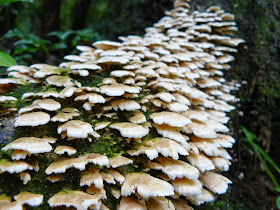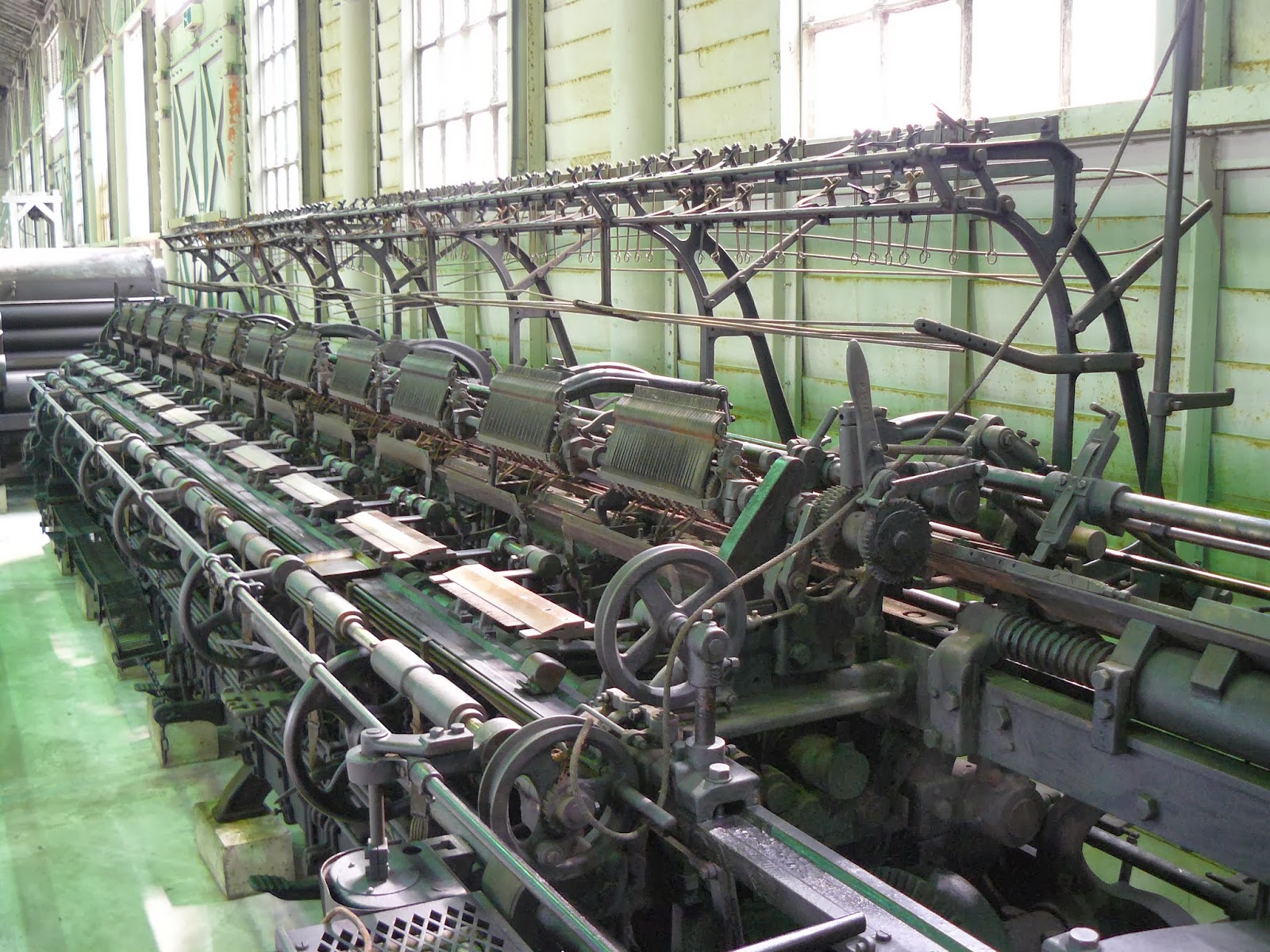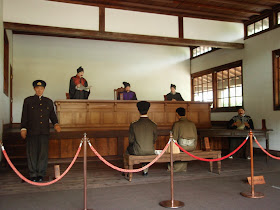When it comes to museums, I like ones that feel real.
Face it, going through a dim room where everything is hiding behind glass, untouched for years, is simply boring. Life was meant to be lived, not watched. Unless you're a reality TV show producer. So museums which just put old things on shelves to be looked at usually don't appeal to me.
Dynamic exhibits, like some of the ones I saw at the Fukushima Prefectural Museum, are better. Looking at the dioramas help me to picture how life was back "then" - whenever "then" was. Art museums with hands-on areas add to the experience; one of the reasons I like modern art museums is that artists use a wider variety of media, sometimes adding tactile or auditory components.Science museums that are more kid-friendly are usually on my itinerary when I go to new cities.
When it comes to history, perhaps the best kind of museum is the open air museum. Getting to explore authentic buildings and settings really helps me imagine I'm back in the past. I've been to a few in Japan: the Edo Tokyo architectural museum, Glover Garden, and Bukeyashiki were all nice. The Abashiri Prison Museum was amazing! But just a bit better is the Meiji Mura open-air architectural museum, located outside Inuyama.
There are about 60 buildings, restored and ready to be explored.The buildings are grouped into small neighborhoods, with similar types of buildings usually in the same area. And they range from commercial to residential to industrial.
Almost every building is open to explore, at least some of it. And they are laid out to give a feel for how they were decorated, furnished, and/or used.
When I arrived, it was raining. Needing an umbrella didn't dampen my spirits, though.
There are a few schools; this was probably an elementary school. Some visitors were relaxing in some of the buildings, including this girl doing some reading.
The class piano has seen better days.
There are structures that aren't quite buildings, too, including old light posts, gates, bridges, and this small guard house.
Buildings come from all over the world. Most of them were built in the 19th century.
Inside the church, you can wander around or have a seat and imagine a sermon or wedding.
The residential buildings can usually be explored too. Remember to take off your shoes when you go inside!
One large house was well-furnished and probably saw a lot of guests.
In some rooms, you can go right up to the tables and chairs. In others, you can see in the room but not walk inside.
Mushrooms! Expect to walk a lot here. The grounds are huge and hilly, and the buildings are spread out.
I'm guessing you can rent out rooms here for parties and weddings.
One large building had a couple of old train cars.
Here's a college classroom building.
I've seen this style of classroom in some movies but this was the first time I've seen one in person. There were two in the building, side by side.
This building is a telephone exchange building.
Inside there were phones and switchboards. I think you could use a few of them.
It wasn't in operation today, but there's a streetcar that can take you across some of the park. There's also a shuttle bus that goes from one end of the park to the other.
A laboratory.
A lighthouse light.
A small brick maze.
This is an army hospital, I think. Note the red cross on the carving.
Sleepy? Sick? Take a nap here.
Here's another train artifact. It sits next to an old railroad bridge.
A nearby building has manufacturing equipment, including this electric motor.
The sun came out about halfway through my visit. Note the beautiful skies! This is an old post office, and was quite popular.
In addition to postal boxes, you could also mail cards to family and friends with a special postmark.
A very large cathedral.
An old prison gate.
My favorite shot!
This strange building was used in some kind of movie. You could climb stairs up to the top floor windows.
The view from the top floor.
Another prison, similar in construction to Abashiri.
This one also has a radial design with a single guard in the center.
It's easy to monitor criminals writing home to their families if they're in these little boxes.
I think this was the only building with mannequins.
I saw these spiders all over the Nagoya area.
This is the other prison at Meiji Mura. It's older and less secure.
Note the sign that encourages you to climb into a cell. They are quite spacious.
What museum with two prisons couldn't also have a courthouse?
Here's the courthouse from the outside.
A sake brewery with equipment used while brewing nihonshu.
Nagoya is known for misokatsu; miso is a soy-based sauce, and katsu is fried meat (usually pork). Japan knows how to make delicious fried foods! The museum has three restaurants and eight cafes/snack bars. Expect to buy some food here to take a break and keep yourself energized on your visit!
Frank Lloyd Wright may be a bit out of place at this museum, but this old hotel is quite nice.
I didn't have enough time to really explore many of the buildings. I expect to go back to the museum some time and really look around inside more of the buildings.
There are six shops, including the main museum shop. A couple of them are specialty shops, including a glass shop and a candy shop. The streetcar, train, and bus can be ridden during the day (sometimes the streetcar and train are out of service). Also, it is possible to rent costumes for a short period for photographs.
The Museum Meiji Mura is located outside Inuyama. To get there, take a train to Inuyama (about 30 minutes from Nagoya), then a 20-minute bus ride to the museum (every 20-30 minutes). Admission is a bit high at 1700 yen, but the size and quality of the museum makes well worth every coin. Visitors can take a stroll for a couple hours, but planning to spend several hours and really looking through every building will make this trip really memorable. It's open daily from 9:30 to 17:00 (til 4:00, closed Mondays, November-February).

















































































I had no idea that part of Wright's Imperial Hotel from Tokyo still existed. I might have to add this to my list of places to go next time I'm in Japan.
ReplyDeleteYeah, too bad it's just part of the hotel. As I've gone back through my photos of this museum, I have to ask myself why I didn't go somewhere, and then realize that "somewhere" might not have been kept.
ReplyDelete